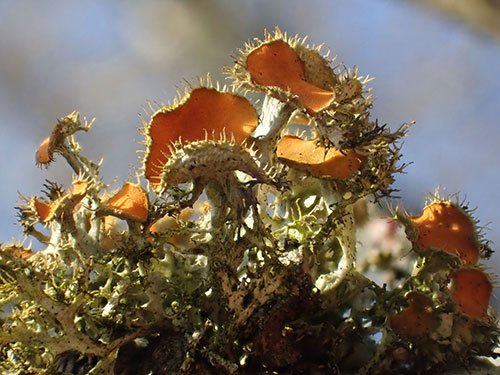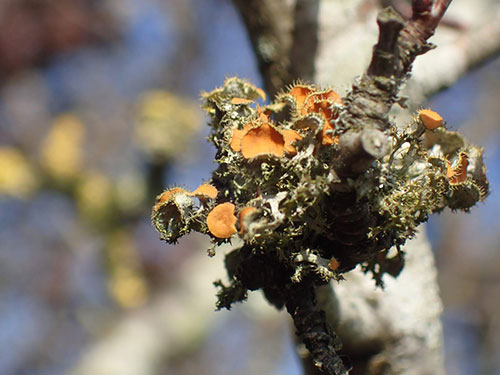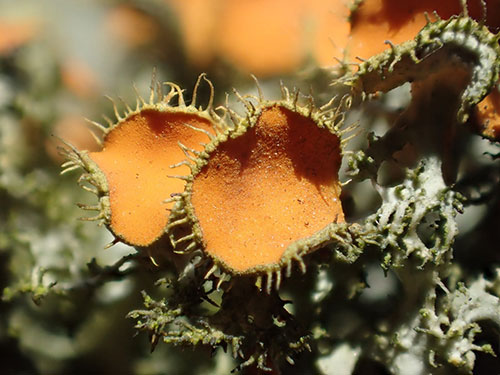


Golden-eye Lichen, Teloschistes chrysophthalmus
Photo: Graeme Lyons

Golden-eye Lichen, Teloschistes chrysophthalmus
Photo: Graeme Lyons

Golden-eye Lichen, Teloschistes chrysophthalmus
Photo: Graeme Lyons
Originally considered to be extinct in the UK, Teloschistes chrysophthalmus Golden-eye Lichen reappeared on a Herefordshire apple tree in 2005 and since then has made a sporadic appearance along the South Coast of England, possibly due to changes in air pollution.
In Sussex, there have been recent reports of Golden-eye Lichen at Devil’s Dyke, Landport Bottom and Malling Down, but it’s worth keeping an eye out anywhere along the South Downs, particularly Brighton and Lewes. It seems to appear mostly where there is sea air, and on Hawthorn and apple trees where you will find it on twigs in compact tufts.
Now is the best time to search for it, when the leaves are off the trees and afford you a better view.
It can be distinguished from other species within the genus by its numerous orange fruiting bodies (apothecia) which are 1-4mm wide and are framed by small marginal hair-like structures (cilia).
You can read some lovely blogs about recent discoveries at Devil’s Dyke by Graeme Lyons and James McCulloch.
For more information on identifying this species, we refer you to the account on the Irish Lichens page: http://www.irishlichens.ie/pages-lichen/l-181.html
Submit any sightings via iRecord or alternatively please send details of any observations (with photos) to Bob Foreman.
Every month it is our aim to highlight a species that is “in-season” and, although not necessarily rare or difficult to identify, has been highlighted by our local recording groups as being somewhat under-recorded and for which new records would therefore be welcomed.
If you or your recording group are aware of species such as this then please contact Bob Foreman.